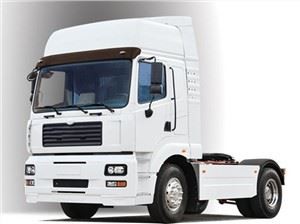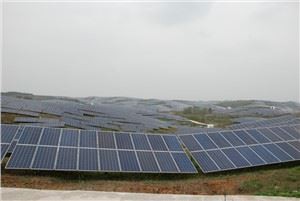Understanding Fire Engine Types: A Comprehensive Guide

Introduction
Fire engines are vital assets for fire departments around the world, equipped with tools and features designed to combat fires and respond to emergencies. With various types of fire engines available, each serves a unique purpose based on the needs of a community. This article explores different fire engine types, their specifications, uses, and importance in firefighting efforts. Whether you are a fire service professional or a general enthusiast, this comprehensive guide will help you understand the ins and outs of fire engine types.
Types of Fire Engines
This section provides an overview of the most common fire engine types utilized by fire departments. Understanding these categories is crucial for appreciating their specific functions in firefighting.
Pumper Engines
Pumper engines, also known as fire engines, are the most recognized type. They play a critical role in firefighting by providing water to firefighters through hoses. Here are some features and applications:
- Water Tank: Typically, pumper engines are equipped with tanks that hold water ranging from 500 to 1,000 gallons.
- Pumps: They have powerful pumps that can deliver water at high pressure.
- Hoses and Nozzles: Equipped with various hoses and nozzle types for different fire situations.
Practical Example
In residential areas, pumper engines are often first responders during fire outbreaks, quickly connecting to hydrants or using onboard water to douse flames.
Aerial Firefighting Apparatus
Aerial fire engines, also known as ladder trucks, are designed for high-rise fires and situations where ground fire fighting is challenging. Key characteristics include:
- Ladders: Extending aerial ladders that reach heights of 100 feet or more.
- Platform Systems: Some aerial units come with platforms that allow firefighters to operate hoses from elevated positions.
Practical Example
During a multi-story building fire, aerial engines are crucial for reaching upper floors and rescuing trapped occupants.
Squad Trucks
Squad trucks are versatile firefighting vehicles equipped with specialized equipment for emergency medical service (EMS) and fire response. Their features include:
- Medical Equipment: Many squad trucks carry essential medical supplies, supporting EMS operations.
- Firefighting Tools: Additionally equipped with tools and hoses for tackling smaller fires.

Practical Example
Squad trucks are often dispatched for medical emergencies as well as rapidly responding to small fires needing immediate attention.
Wildland Fire Engines
Designed for battling fires in rural areas or forests, wildland fire engines are usually lighter and more maneuverable. They feature:
- All-Terrain Capabilities: Suitable for navigating rugged terrain.
- Water Pumps: Water pumps that can deliver water through hoses in remote locations.
Practical Example
During wildfire season, these engines are dispatched to areas where fires pose a risk to properties and natural resources.
Brush Trucks
These are specialized vehicles for tackling brush and grass fires in rural settings. Their key features are:
- Sprayers: They often have high-pressure water sprayers.
- Robust Design: Built to withstand rough landscapes and harsh conditions.
Practical Example
Brush trucks prove essential when combating wildfires that threaten homes and wildlife in wooded areas.
Rescue Trucks
Rescue trucks are designed for emergency medical situations and technical rescue, with the following specifications:
- Rescue Tools: Equipped with tools such as Jaws of Life to free individuals trapped in vehicles.
- Medical Supplies: Carry essential medical equipment for emergencies.
Practical Example
In cases of motor vehicle accidents, rescue trucks swiftly respond to extricate trapped victims and provide medical care.
Tankers
Tankers are large fire engines designed to transport significant quantities of water, particularly in areas where fire hydrants are unavailable. Key features include:
- High Capacity: Can carry thousands of gallons of water.
- Pumping Capability: Some tankers have onboard pumps for effective water distribution.
Practical Example
Tankers are instrumental in firefighting efforts in rural communities lacking centralized water systems, delivering water to the scene of a fire.
Hazardous Material (Hazmat) Trucks
Hazmat trucks are specialized fire engines equipped to manage dangerous materials incidents. Their features include:
- Containment Equipment: Tools to contain hazardous materials safely.
- Specialized Training: Crews are often trained to handle chemical spills and toxic environments.
Practical Example
Hazmat units respond to chemical plant incidents or spills on roadways, assessing risks and implementing mitigation strategies.
Choosing the Right Fire Engine for Your Community
It is essential for fire departments to consider several factors when acquiring fire engines to meet community needs effectively. Here are some considerations:
Community Population and Risks

Understanding the population size and potential risk factors such as industrial areas, rural settings, or high-density housing can guide the type and number of fire engines required.
Local Geography and Infrastructure
Assess the local terrain, roadways, and availability of water sources. For instance, wildland engines are crucial in heavily forested regions, while aerial trucks may be necessary in urban settings.
Budget and Funding
Fire departments must consider budget constraints. Investing in versatile vehicles may offer more value than numerous specialized units that may not be used often.
Maintenance of Fire Engines
Proper maintenance is vital to ensure that fire engines function optimally when called into action. Here are some key maintenance practices:
Regular Inspections
Conducting periodic inspections of various engine components, including pumps, hoses, and ladders, can prevent mechanical failures during emergencies.
Routine Cleaning
Keeping fire engines clean is essential, preventing the buildup of dirt and residue that can impair functionality and decrease longevity.
Training Personnel

Regular training for firefighters helps them understand the features and operations of different fire engines, ensuring they can use the equipment effectively during crises.
Fire Engine Technology and Innovations
Technology continues to evolve in the firefighting sector, introducing new capabilities and enhancing fire engine performance. Here are some notable innovations:
Understanding Fire Fighting Drones
Drones are now being deployed for scouting fire locations, offering real-time footage, and identifying hotspots without risking personnel safety.
Advanced Pumping Systems
Modern fire engines are equipped with sophisticated pumping systems that provide greater water pressure and efficiency, allowing response teams to tackle fires more effectively.
Telematics and Tracking Systems
With GPS tracking and telematics, fire apparatus can be monitored in real time, allowing for better incident management and deployment strategies during emergencies.
Fire Engine Training and Drills
Effective training and drills play a pivotal role in ensuring that fire personnel are prepared to utilize different types of fire engines. Here are some essential training areas:
Operating the Equipment
Practicing with engines, hoses, and other firefighting tools is essential to develop muscle memory and confidence among firefighters.
Emergency Response Simulations
Conducting simulations of various emergency scenarios helps crews prepare for real situations, fostering teamwork and effective communication.
Public Education and Engagement
Involving the community through fire safety programs and demonstrations can enhance public awareness and preparedness for emergencies.
Frequently Asked Questions (FAQ)
1. What is the average lifespan of a fire engine?
The average lifespan of a fire engine is typically around 15-20 years, but proper maintenance can extend its operational life.
2. How do fire engines get their water supply?
Fire engines can obtain water from hydrants, onboard water tanks, natural sources like rivers or lakes, and tankers.
3. What equipment is typically found on a fire engine?
A standard fire engine is equipped with hoses, nozzles, water tanks, pumps, ladders, firefighting gear, and medical supplies.
4. Are all fire engines equipped for medical emergencies?
While not all fire engines carry medical equipment, pumper and squad trucks often come with essential EMS supplies for emergencies.
5. How are fire engines funded?
Most fire engines are funded through municipal budgets, grants, and sometimes donations from local communities or organizations.
6. Can fire engines be customized for specific needs?
Yes, fire engines can be customized to meet specific community needs, including size, equipment, and capabilities depending on local requirements.
